Health
First AI-generated drug enters human clinical trials, targeting chronic lung disease patients
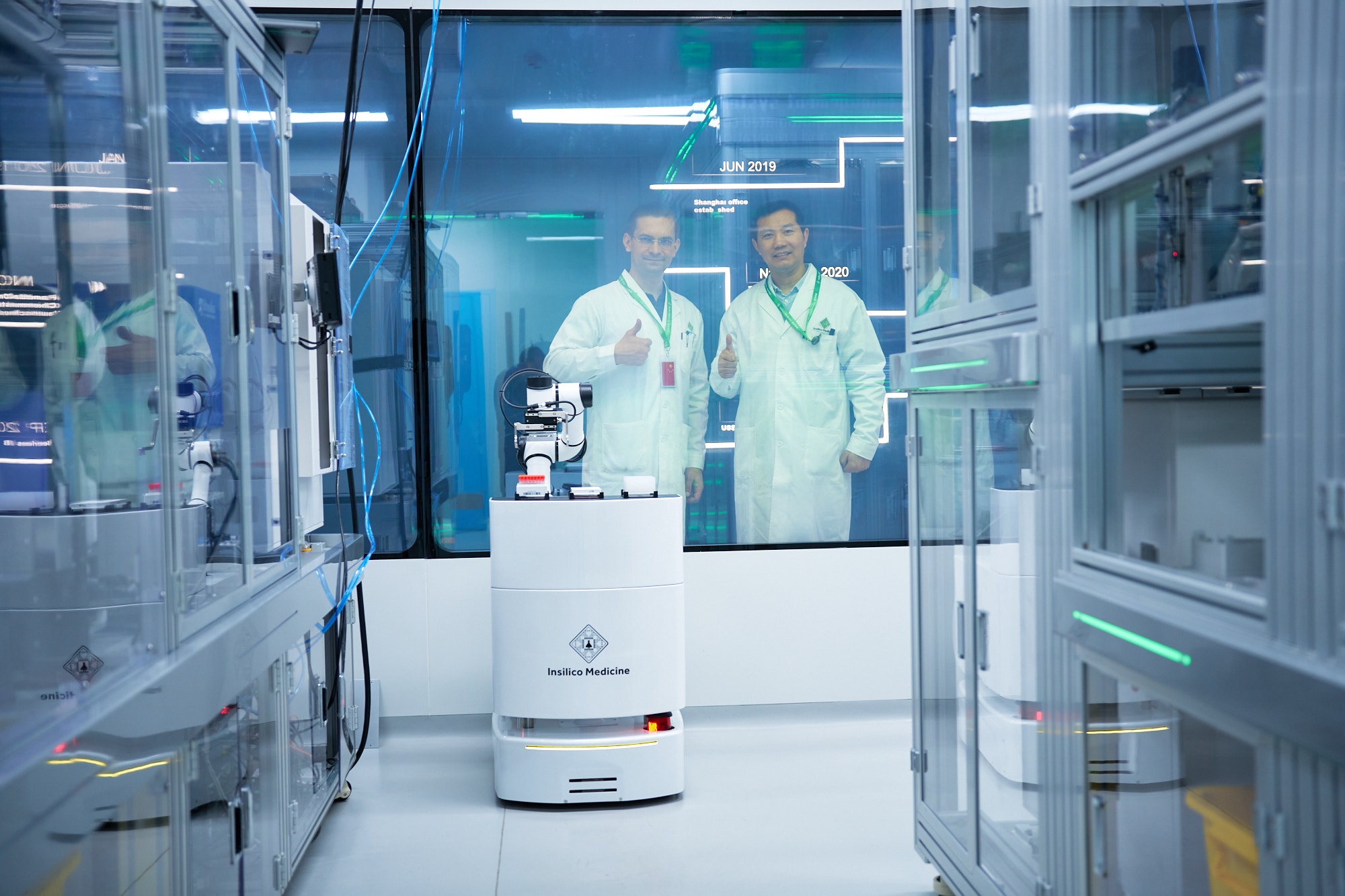
The first-ever drug generated by artificial intelligence has entered Phase 2 clinical trials, with the first dose successfully administered to a human, Insilico Medicine announced yesterday.
The drug, currently referred to as INS018_055, is being tested to treat idiopathic pulmonary fibrosis (IPF), a rare, progressive type of chronic lung disease.
The 12-week trial will include participants diagnosed with IPF.
“This drug, which will be given orally, will undergo the same rigorous testing to ensure its effectiveness and safety, like traditionally discovered drugs, but the process of its discovery and design are incredibly new,” said Insilico Medicine’s CEO Alex Zhavoronkov, PhD, in a statement to Fox News Digital.
FIRST NEW ‘QUIT-SMOKING’ DRUG IN 20 YEARS SHOWS PROMISING RESULTS IN US TRIAL: ‘HOPE AND EXCITEMENT’
“However, with the latest advances in artificial intelligence, it was developed much faster than traditional drugs.”
How AI is transforming drug discovery
For any new drug, there are four steps, explained Zhavoronkov, who is based in Dubai.
“First, scientists have to find a ‘target,’ a biological mechanism that is driving the disease, usually because it is not functioning as intended,” he said.
Insilico Medicine’s CEO Alex Zhavoronkov, PhD (left), is pictured in the company’s AI-run robotics lab in Suzhou, China, which Insilico opened in January 2023. (Insilico Medicine)
“Second, they need to create a new drug for that target, similar to a puzzle piece, that would block the progression of the disease without harming the patient.”
The third step is to conduct studies — first in animals, then in clinical trials in healthy human volunteers, and finally in patients.
RESEARCHERS USE AI TO UNDERSTAND ALZHEIMER’S DISEASE, IDENTIFY DRUG TARGETS
“If those tests show positive results in helping patients, the drug reaches its fourth and final step — approval by the regulatory agencies for use as a treatment for that disease,” said Zhavoronkov.
In the traditional process, he said, scientists find targets by combing through scientific literature and public health databases to look for pathways or genes linked to diseases.
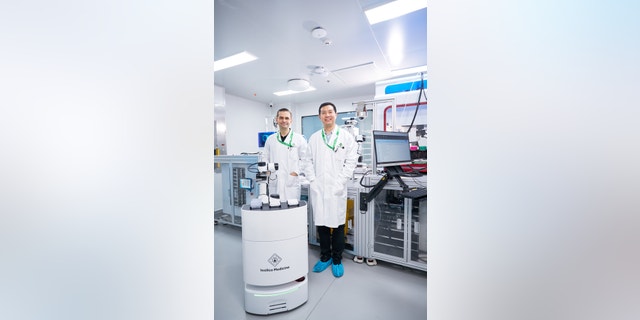
CEO Alex Zhavoronkov, PhD (left), in the company’s AI-run robotics lab in Suzhou, China. “AI allows us to analyze massive quantities of data and find connections that human scientists might miss,” he said, “and then ‘imagine’ entirely new molecules that can be turned into drugs.” (Insilico Medicine)
“AI allows us to analyze massive quantities of data and find connections that human scientists might miss, and then ‘imagine’ entirely new molecules that can be turned into drugs,” Zhavoronkov said.
In this case, Insilico used AI both to discover a new target for IPF and then to generate a new molecule that could act on that target.
AI TECH AIMS TO HELP PATIENTS CATCH DISEASE EARLY, EVEN ‘REVERSE THEIR BIOLOGICAL AGE’
The company uses a program called PandaOmics to detect disease-causing targets by analyzing scientific data from clinical trials and public databases.
Once the target was discovered, researchers entered it into Insilico’s other tool, Chemistry42, which uses generative AI to design new molecules.
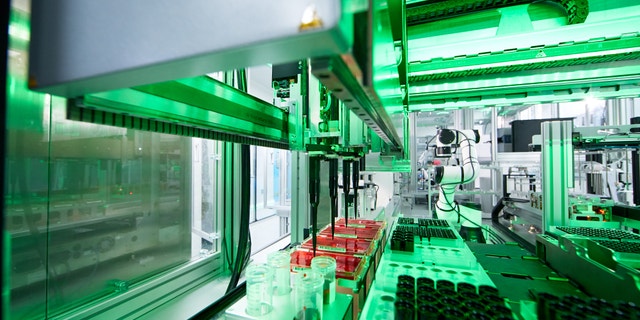
The first drug generated by artificial intelligence has entered Phase 2 clinical trials, with the first dose successfully administered to a human, Insilico Medicine announced. (Insilico Medicine)
“Essentially, our scientists provided Chemistry42 with the specific characteristics they were looking for and the system generated a series of possible molecules, ranked based on their likelihood of success,” Zhavoronkov said.
The chosen molecule, INS018_055, is so named because it was the 55th molecule in the series and showed the most promising activity, he said.
AI-DISCOVERED DRUG SHOWS ‘ENORMOUS POTENTIAL’ TO TREAT SCHIZOPHRENIA: ‘REAL NEED FOR BETTER TREATMENT’
The current treatments for idiopathic pulmonary fibrosis are pirfenidone and nintedanib.
While these drugs may provide some relief or slow the worsening of symptoms, they do not reverse the damage or stop progression, Zhavoronkov said.
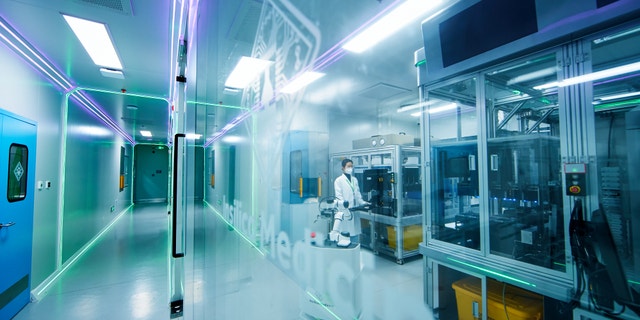
The Insilico team is hopeful the data from this newly launched clinical trial will confirm their drug’s safety and effectiveness. (Insilico Medicine)
They also have unpleasant side effects, most notably nausea, diarrhea, weight loss and loss of appetite.
“There are very few options for people with this terrible condition, and the prognosis is poor — most will die within two to five years of diagnosis,” Zhavoronkov explained.
“Our initial studies have indicated that INS018_055 has the potential to address some of the limitations of current therapies.”
Next steps
The Insilico team is hopeful the data from this newly launched clinical trial will confirm the drug’s safety and effectiveness.
CLICK HERE TO SIGN UP FOR OUR HEALTH NEWSLETTER
“If our Phase IIa study is successful, the drug will then go to Phase IIb with a larger cohort of participants,” said Hong Kong-based Sujata Rao, M.D., Insilico’s chief medical officer, in a statement to Fox News Digital.
During Phase IIb, the primary objective will be to determine whether there is significant response to the drug, Rao said.
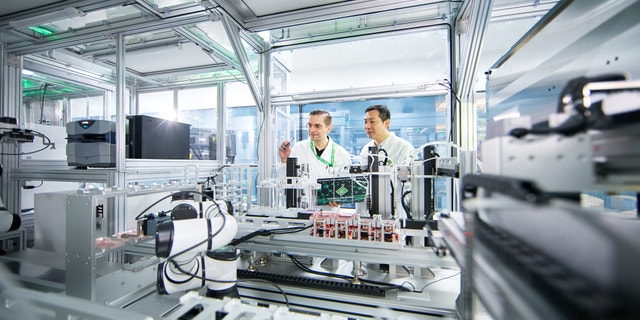
In this case, Insilico used AI to discover a new target for IPF — and then to generate a new molecule that could act on that target. (Insilico Medicine)
“Then, the drug will go on to be evaluated in a much larger group of patients — typically hundreds — in Phase III studies to confirm the safety and effectiveness before it can be approved by the FDA as a new treatment for patients with that condition,” he explained.
One of the biggest challenges with these trials is recruiting patients, Rao said, particularly for a rare disease like idiopathic pulmonary fibrosis.
“Patients need to fulfill certain criteria in order to be considered for trial enrollment,” he noted.
Despite the challenges, Rao said the research team is optimistic that this drug will be ready to go to market — and reach the patients who may benefit from it — in the next few years.

Health
'Yellowstone' Dads: See Your Favorite Cowboys With Their Adorable Kids

Sign Up
Create a free account to access exclusive content, play games, solve puzzles, test your pop-culture knowledge and receive special offers.
Already have an account? Login
Forgot your password?
Get back to the Sign In
Use left and right arrow keys to navigate between menu items.
Use escape to exit the menu.
Health
Cancer nearly took his leg, but this father of 6 is walking again: ‘I shouldn’t be here’
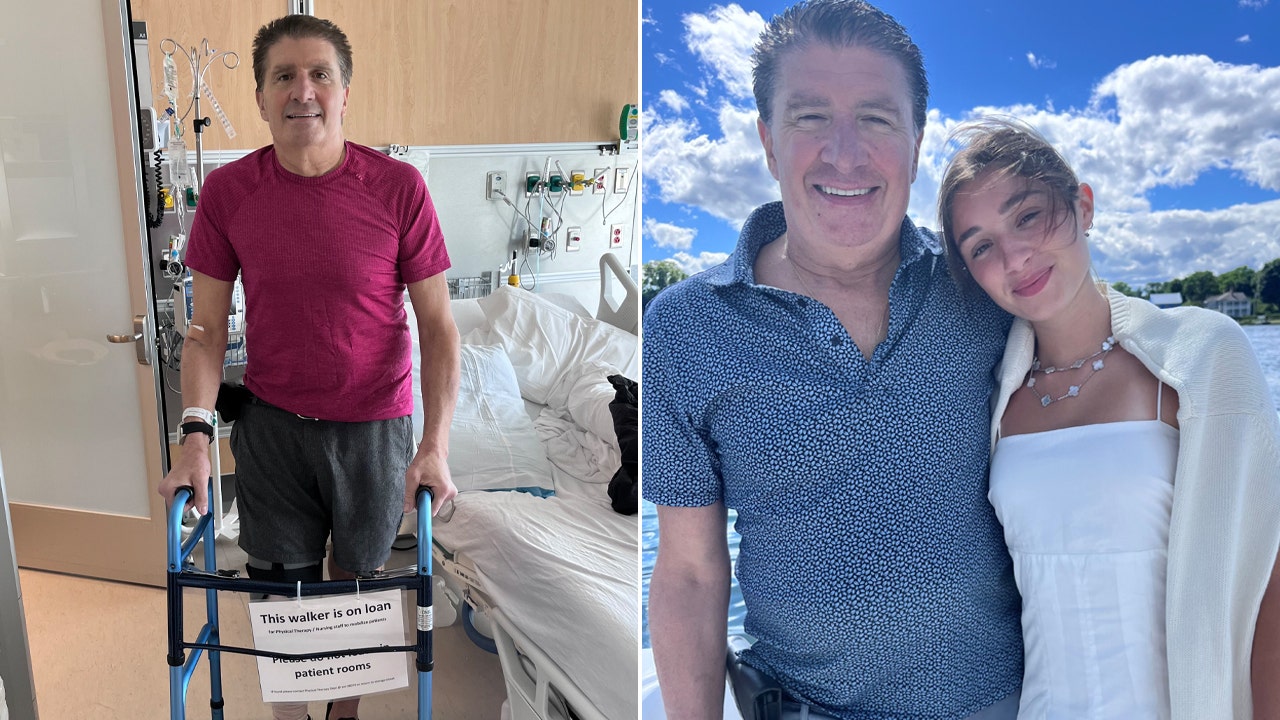
For one New York father of six who overcame the odds, this Father’s Day will be sweeter than most.
Richard Monti, a real estate developer who lives on Long Island, recently faced certain amputation after a life-threatening infection — until a determined doctor saved his leg with a complex surgery.
When Monti was diagnosed with metastatic kidney cancer in 2018, he thought that would be his toughest battle.
MELANOMA PATIENTS REVEAL DRAMATIC STORIES FOR SKIN CANCER AWARENESS MONTH: ‘I THOUGHT I WAS CAREFUL’
But after having surgery last year to repair his fractured upper shin bone — which had been damaged by years of cancer and radiation therapy — Monti developed sepsis, which threatened both life and limb.
Richard Monti, a real estate developer on Long Island, recently faced certain amputation after a life-threatening infection. A determined doctor was able to save his leg with a complex surgery. (Richard Monti)
It is relatively common for cancer patients to experience these types of fractures, according to Dr. Nicola Fabbri, chief of the Division of Orthopedic Oncology at NYU Langone Orthopedics, who treated Monti.
“When cancer is metastatic and goes to the bone, fractures do occur — it’s actually the main complication,” Fabbri told Fox News Digital in an interview.
“Probably 50% of people who develop bone metastases develop fractures.”
EXPERIMENTAL CANCER TREATMENT GIVES NEW JERSEY MOM A CHANCE FOR A SECOND BABY: ‘I DECIDED TO GO FOR IT’
While he was intubated and in a coma for several weeks, Monti underwent six surgeries to clean out the infection and try to restore his bones.
“They told my wife she should get prepared,” he told Fox News Digital in an interview. “They didn’t expect me to make it.”
Monti did pull through — but when he woke up, doctors delivered even more devastating news.

Richard Monti, center, is pictured with his family, who helped him get through his long ordeal. “I’m really living a normal life now,” he said. (Richard Monti)
“I was given basically one option, and that was amputation,” Monti, now 64, said in an interview with Fox News Digital.
The news sent Monti, who thrives on working on his feet, into a “very, very dark place.”
He said, “At that point, I was probably at my lowest. When my body moves, my mind moves. Losing that leg — I thought that was the way my story would end.”
“I was given basically one option, and that was amputation.”
Monti sought a second opinion from Dr. Fabbri of NYU Langone Orthopedics, who was highly recommended.
“When I met him, I loved what he said — ‘We don’t just cut legs off,’” Monti recalled.
After many tests and scans, the doctor told Monti he was “going back to the drawing board,” a nod to Monti’s building background.
“My wife and I started crying and smiling,” Monti recalled.

Dr. Nicola Fabbri, chief of the Division of Orthopedic Oncology at NYU Langone Orthopedics, was determined to save Monti’s leg. (Dr. Nicola Fabbri)
The doctor said he was hoping that given time, Monti’s sepsis would resolve, and his soft tissue would recover enough for a successful reconstruction surgery.
Monti’s case was complicated. He was dealing with an unhealed fracture of the upper part of his tibia, tissue damage from the sepsis infection, and significant bone loss and weakness from the radiation treatment for his cancer.
YOUNG GIRL SURVIVES CANCER THANKS TO LITTLE SISTER’S LIFESAVING DONATION: ‘A PERFECT MATCH’
“The sepsis was probably linked to being immunocompromised due to his cancer treatment,” Fabbri told Fox News Digital.
‘Performed miracles’
After Monti had some time to heal, he was deemed ready for surgery.
After 15 months of being in a brace and on crutches, Monti underwent a limb-preserving surgery consisting of a complex knee and tibia reconstruction.
While placing a new knee implant, Fabbri was able to correct the severe deformity caused by the fracture.
During the 11-hour surgery, which took place on Oct. 17 of 2023, the doctor also removed damaged parts of the tibia and replaced them with metal implants.
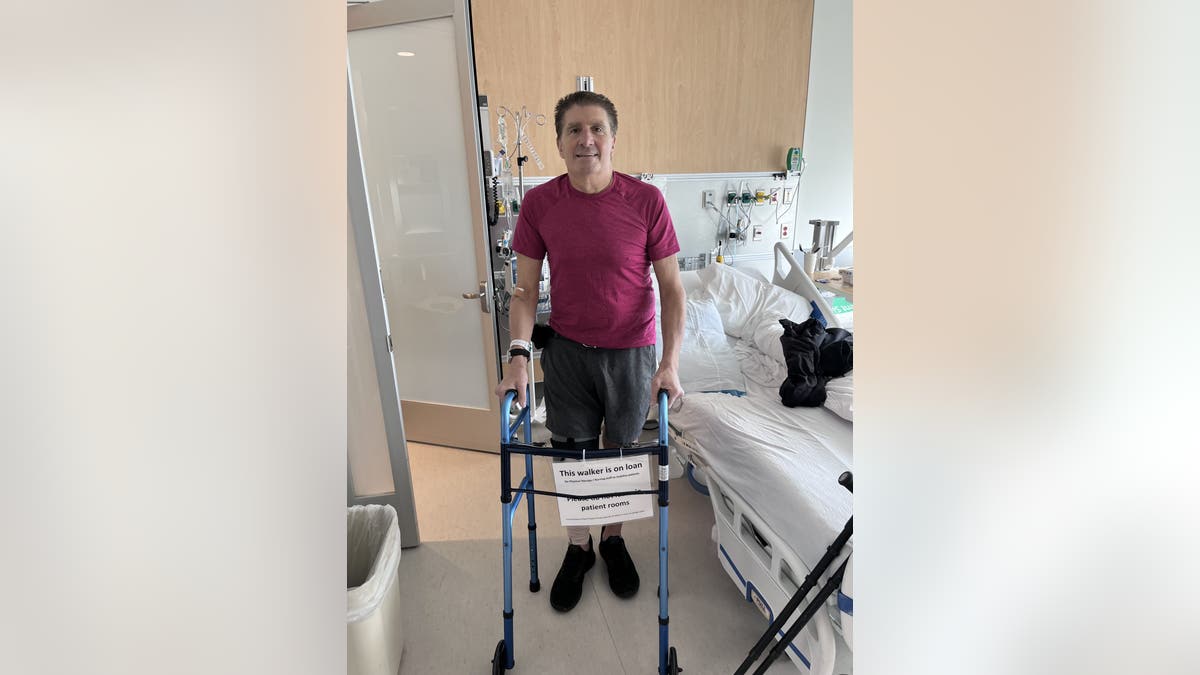
“That doctor and his team did perform miracles in my eyes,” Monti said of the surgery that saved his leg. (Richard Monti)
Now, Monti is pain-free, back to work — and able to walk without a cane or crutches.
“That doctor and his team did perform miracles in my eyes,” he said.
Monti still takes a chemotherapy pill once a day, and his tumors are now “very small, less than a centimeter.”
“For me to still be here — it means God’s got work for me to do.”
Although Fabbri has performed similar surgeries in the past, he noted that the circumstances of Monti’s challenges were “extremely rare.”
“This was a particularly challenging situation,” he said. “I never thought he could come back at this level. It’s really remarkable where he is today.”

Monti was able to walk on the beach just a couple of months after his surgery. “He can walk as tolerated with no support or limited support,” his doctor said. (Richard Monti)
Although Monti can’t run, he has “no substantial limitations” in his daily activities, his doctor told Fox News Digital.
“He can walk as tolerated with no support or limited support,” Fabbri said. “He sent me a video of him walking on the beach. It’s fantastic.”
CLICK HERE TO SIGN UP FOR OUR HEALTH NEWSLETTER
Throughout Monti’s darkest days, he said he drew strength from the love for his family — including his wife, five daughters and one son — and his faith.
“For me to still be here — it means God’s got work for me to do,” he said. “So I’m going to continue to do that work, because I honestly shouldn’t be here.”

Largely inspired by her father’s health journey, one of Monti’s daughters, pictured, has decided to pursue a career in nursing. “I’m so proud of her,” the dad said. (Richard Monti)
Recently, Monti was able to attend his daughter’s high school graduation, visit the college she will attend in the fall and enjoy a walk on the beach.
“It used to be that every step I took reminded me of cancer,” he said. “Every step was so painful. But now I really don’t think about it.”
“I’m living a normal life now.”
Largely inspired by her father’s health journey, one of Monti’s daughters has decided to pursue a career in nursing.
“Not everybody is so resilient.”
“I asked her why she was so determined to be a nurse,” Monti said. “She said, ‘Sitting there watching you all those months, I learned I had a lot to offer.’ I’m so proud of her.”
Fabbri credits Monti’s determination and positive outlook as being inextricably linked to his successful outcome.
For more Health articles, visit www.foxnews/health
“Not becoming discouraged and still willing to go ahead — it takes a lot of guts and determination,” he said.
“It takes a lot of strength to believe in yourself and your physician. Not everybody is so resilient.”
Health
Paleo and Atkins Diets: Low-Carb for Different Reasons | Woman's World

Sign Up
Create a free account to access exclusive content, play games, solve puzzles, test your pop-culture knowledge and receive special offers.
Already have an account? Login
Forgot your password?
Get back to the Sign In
Use left and right arrow keys to navigate between menu items.
Use escape to exit the menu.
-

 News1 week ago
News1 week agoIsrael used a U.S.-made bomb in a deadly U.N. school strike in Gaza
-

 World1 week ago
World1 week agoRussia-Ukraine war: List of key events, day 833
-

 Politics1 week ago
Politics1 week agoGeorge Clooney called White House to complain about Biden’s criticism of ICC and defend wife’s work: report
-

 Politics1 week ago
Politics1 week agoNewson, Dem leaders try to negotiate Prop 47 reform off California ballots, as GOP wants to let voters decide
-

 World1 week ago
World1 week ago‘Bloody policies’: Bodies of 11 refugees and migrants recovered off Libya
-

 Politics1 week ago
Politics1 week agoEmbattled Biden border order loaded with loopholes 'to drive a truck through': critics
-

 World1 week ago
World1 week agoDozens killed near Sudan’s capital as UN warns of soaring displacement
-

 World1 week ago
World1 week agoVideo: U.S. Official Responds to Israeli Strike on a U.N. School in Gaza















